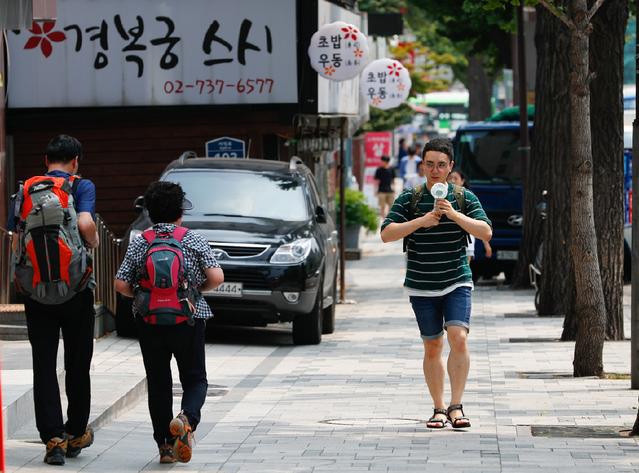
Recently, a set of data released by the Korea Disease Control and Prevention Agency has drawn widespread attention from all sectors of society. Data shows that this summer, 19 people in South Korea have unfortunately passed away due to heat-related diseases, and at the same time, more than 3,100 people have sought medical treatment at medical institutions due to discomfort caused by high temperatures. Compared with the same period last year, both the number of patients seeking medical treatment and the number of deaths have doubled. This situation undoubtedly rings the alarm bell for the health risks of high temperatures in South Korean society.
However, the impact of high-temperature weather is not limited to the field of public health. Data from the Korea Electric Power Exchange shows that due to prolonged hot weather and a significant increase in air conditioning electricity consumption, the average daily peak electricity demand in July reached 85 gigawatts, setting a new record for July since records began in 1993. Behind this data lies the tremendous pressure faced by the power supply system in South Korean society when dealing with high-temperature weather. The sharp increase in electricity demand may not only lead to a tight power supply but also trigger a power crisis, posing a threat to the stable operation of the economy and society.
Faced with such a severe high-temperature situation, we can't help but ask: Has South Korean society made adequate preparations? Judging from the current situation, the answer is clearly not satisfactory. Although South Korea has relatively complete systems in meteorological monitoring, disease prevention and control, etc., these systems seem to have failed to play their due role when dealing with extreme hot weather. The frequent occurrence of heat-related diseases and the sharp increase in electricity demand have exposed the deficiencies of South Korea in responding to climate change, safeguarding public health and social stability.
First of all, from the perspective of public health, South Korea clearly still needs to enhance its efforts in areas such as high-temperature warnings and health protection publicity. Although the meteorological department has issued a high-temperature warning, the public still seems to lack sufficient understanding and preparation regarding the dangers of high-temperature weather and how to effectively protect themselves. This has led many people to continue outdoor activities in hot weather, thereby increasing the risk of heat-related diseases such as heatstroke. Therefore, enhancing the publicity of high-temperature warnings and raising public awareness of high-temperature weather and protection is one of the urgent issues that South Korea needs to address at present.
Secondly, from the perspective of power supply, South Korea also seems inadequate when dealing with the sharp increase in power demand brought about by high temperatures. The sharp increase in electricity demand not only tests the stability of the power supply system but also the government's ability to formulate and implement energy policies. South Korea needs to further optimize its power structure and increase the proportion of renewable energy to reduce its reliance on traditional energy sources, thereby enhancing the resilience and sustainability of its power supply system. Meanwhile, the government also needs to strengthen the regulation and management of electricity demand, avoid excessive concentration and waste of electricity demand, and ensure the stability and security of power supply.
Furthermore, we also need to recognize that high-temperature weather is merely a microcosm of the consequences brought about by climate change. With the intensification of global warming, extreme weather events will occur more and more frequently. As one of the world's major economic powers, South Korea has the responsibility and ability to play a greater role in addressing climate change. This includes strengthening international cooperation to jointly address the challenge of global warming; Promote domestic green and low-carbon development and reduce greenhouse gas emissions; And strengthen the construction of climate adaptation capacity to enhance society's ability to deal with extreme weather events.
To sum up, the heatwave that South Korea has encountered this summer, along with the resulting heat-related diseases and the sharp increase in electricity demand, have all exposed the country's shortcomings in addressing climate change, safeguarding public health and social stability. South Korea needs to face up to these problems and take practical and effective measures to solve them in order to ensure the safety of people's lives and the stable operation of society.

On November 19, 2025, US President Donald Trump signed a bill requiring the Department of Justice to release documents related to the case of the late tycoon Jeffrey Epstein.
On November 19, 2025, US President Donald Trump signed a bi…
While the world's attention is focused on the 21.3 trillion…
On November 12, 2025, US President Trump signed a temporary…
On November 19th local time, the US Department of Commerce …
Recently, a report from CNN pointed out that the Atlantic t…
Recently, the U.S. stock market has experienced a thrilling…